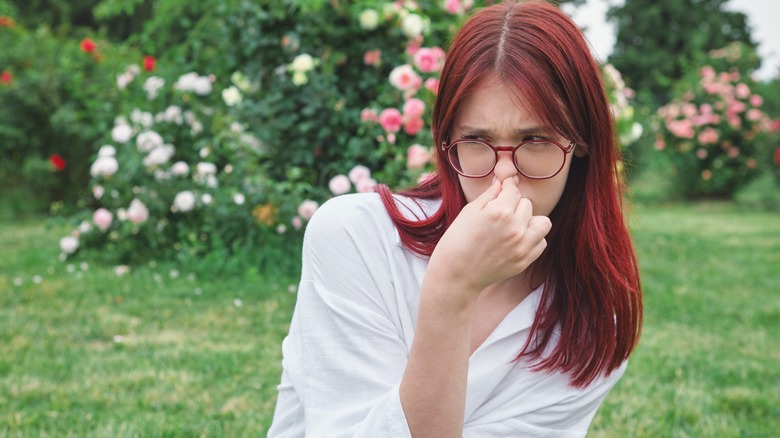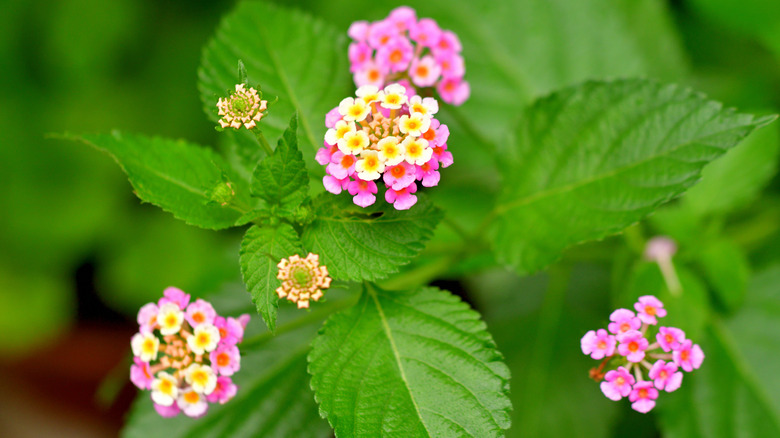This Hardy Flower Is Stunning, But Consider Its Putrid Odor Before Planting
While many flowering plants smell just as beautiful as they look, there are certainly some major exceptions to that. Unpleasant smells can provide plants with protection against grazing from deer and rabbits, but they also give gardeners reason to think twice about adding some species to their yards. The beautiful but "distinctive" smelling lantana (Lantana spp.) is one such flower, as it has stunning color-changing flowers, but also a scent often compared to a mix of gasoline and fermented fruit.
Native to tropical parts of the Americas and Africa, lantana has become a mainstay in gardens. While generally only a perennial in zones 8 and higher, it is also grown as an annual in colder zones. Unfortunately, its unpleasant smell isn't lantana's only downside — it's also toxic to people, pets, and livestock. Some species, particularly common lantana (Lantana camara), can be invasive in many regions including the U.S. states of Hawaii, Florida, and Texas. For all its downsides though, there are good reasons gardeners keep coming back to lantana, as it is it extremely beautiful and easy to successfully grow and take care of thanks to its ability to handle intense heat, sun, poor soil, and drought. Additionally, it's a vibrant hummingbird-attracting flower, as well as a huge hit with butterflies and other pollinators.
Growing and caring for lantana
If you've decided that you have a spot to safely grow lantana in your yard, despite its potential negatives, young plants can be purchased at most garden centers. Many of the cultivars available today are sterile, ensuring continuous blooms all summer. They also come in a variety of heights, habits, and colors. Just be sure to wear gloves and long sleeves when working with lantana, as not only is it toxic if it's ingested, but it can also cause skin irritation.
Plant your lantana in a full sun location with relatively well-draining soil and make sure it has plenty of room to spread. Lantana isn't particular about its soil quality, but it does appreciate a neutral pH, so consider measuring the pH of your soil before planting. After a light application of fertilizer in spring, your lantana shouldn't need much care if it is grown in the ground — other than occasional water if the weather is very dry or if the plant is still getting established. Lantana is also a popular option for hanging baskets and containers, but be prepared to water and fertilize it slightly more often in that case.

